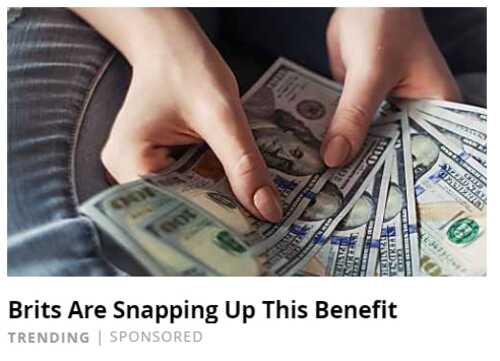What is Clickbait and Why Does It Work?
Clickbait can be found across the internet, most often within social media networks like Facebook as posts with links, as thumbnail image links with text captions on news websites and as sidebar text-only links.
The key to clickbait (as opposed to genuine news and general interest pieces) is that clickbait is deceptive.

Clickbait
nounA headline, and sometimes a caption, designed to make readers want to click on a hyperlink but the link actually leads to content of dubious value or interest compared to the headline.

What Makes It Deceptive?
The headlines and teasers used to tempt you into clicking the link do not reflect the content that you find there. This is where the 'bait' part of the name comes from, a fisherman's hook is disguised with something that fish will be tempted to eat.
There are different levels of deception. Some articles are totally irrelevant to the link, but often they simply fail to deliver on an overambitious promise. For example, saying the most amazing tip is available, but the content is not as amazing as you were lead to believe.
Here we have this example from a news website, the clickbait is dangling free money, the subsequent website content describes a "wealth loophole" and celebrities supposedly endorsing buying Bitcoin from a specific site, no government benefits are discussed.
What is the Purpose?
Clickbait is always motivated by profit, the main reason for clickbait is to present adverts on their own page to you. You know the sort, the banners that pop up at the side of a website that advertise things to you and follow you around the web?
The content is irrelevant, they just need clicks to the page to enable their statistics to sell the advertising on their own page for more money, due to a higher readership.
Some people will inevitably purchase those products too, which is why this clickbait model still exists.
If you're ever considering buying that sort of advertising space, to avoid your products being placed on low quality pages of content, when buying banner advertising directly you should ask for 'Average Session Duration' as well as 'Pageviews'.
Why Does Clickbait Work?
It wouldn't still be a thing if it didn't work. People buy the products in the adverts, so people continue to buy the advertising space. This fuels the websites who create the clickbait to keep on going. But what about clickbait attracts so many clicks?
Psychology today explains, 'we forage for information much in the way our ancestors foraged for food'. The promise of compelling information activates a hormone, dopamine, and creates a need for that information. So we click the link. It's a similar theme in the printed press, you see a big headline on some of the newspapers in the shop and you're compelled to pick it up. You might see some big players on social media do similar, companies like LadBible have thrived on getting readership through clickbait titles.
Another possible explanation is 'The Vegas Effect', we absolutely must discover what is behind the curtain. The headlines put us into a state of anticipation, dopamine (our old friend) makes their appearance and reinforces our seeking behaviour.
In summary, the headlines and images are designed to give us an itch, that can only be scratched by finding out what the information is.
What Can We Learn From Clickbait?
Attention
Getting the attention of customers, consumers and potential clients is tough. Humans have never been bombarded with so many adverts and sales messages as they are today. Clickbait inserts itself in places where people are actively reading - their newsfeeds and in news articles - and grabs their precious attention with sensationalised headlines and imagery.
Deadly Sins
Well... almost. Some of the key attention grabbing headlines induce greed, jealousy, envy and lust. Other top feelings to create are curiosity, fear, hope and shock. The most powerful headlines are extreme, it doesn't matter whether you're overly positive or negative, just that you're enough in one direction to shock people out of their dazed scrolling and into action.
ContrOversy
This one is tricky to work into your content, but if there's a controversial issue surrounding your products, niche, audience or industry facing it head on with headlines will get clicks.
newsjack
Newsjacking is a top technique for getting clicks to your website, opens on your emails etc. It's a technique used by PR for decades, but it's now most commonly seen online. It's simple, piggy-back on a current news story. There's so much news, surely something is relevant to your product?
Cliffhanger
This is the easy one, you're probably already doing it. Any 'Top 5 Ways to xxxx' is leading your customers to click, like our 5 SEO Tips for Small Business Websites, so they can find out what the mysterious list contains. This is applicable to all industries and will help to entice your customers to take the action you're hoping for.
How To Perfect Headlines in 10 Minutes
Did that make you want to read this section? Told you it works. We aren't suggesting that you mislead your customers, or that you invest heavily in sites that use clickbait, but you can learn from the success of this marketing technique and improve your own share of customer attention.
If you're struggling with how the principles of clickbait can help capture attention for your business then get in touch. We're basically a marketing ideas machine over at Sonder, ready to help you get your business to where you need to be.
Other Relevant Resources
There's always more to learn, we recommend these blogs:
Posted on June 1st 2020




